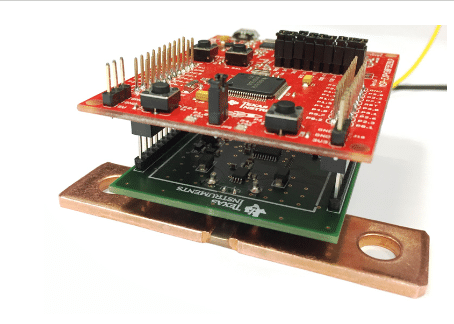In electrical heating applications, resistive heaters are powered through phase angle-controlled SCR/triac circuits to vary the applied voltage/power to maintain the required temperature.
Phase angle control produces a lot of harmonics leading to power line disturbances.
Wow the engineering world with your unique design: Design Ideas Submission Guide
Figure 1’s circuit gives a simple and cost-effective solution without introducing harmonics. This controller skips a certain number of power cycles in between, to vary power to the heaters.
![]()
Figure 1 Circuit schematic of mains cycle skipping controller, this controller skips a certain number of power cycles in between, to vary power to the heaters.
In this typical design, 10 full cycles are taken as base. Timer U3 (555) through R2, R4, and C1 decides this by giving output pulses with an interval of 200 ms, which is the width of 10 full AC cycles of a 50 Hz AC mains (for a 60 Hz mains, this will be 166.6 ms). These pulses trigger U4 (555) monostable to produce pulses with an adjustable width within 200 ms, by adjusting potentiometer RV1. This pulse train controls an optotriac with zero cross detector U2 (MOC3033) to trigger triac U1 (BTA25-600BW). The triac conducts for the duration of “off pulse widths” produced by U4. Thus, these conduction periods allow the selected number of voltage cycles to pass through and impress on load. During “on pulse widths”, the triac does not conduct and skips the voltage cycles. Simulated waveforms can be seen in Figure 2 with two full cycles being skipped and Figure 3 with five full cycles being skipped.
![]()
Figure 2 Simulated waveforms with the U3 timer output (yellow), U4 timer output (blue), and heater voltage (pink). Eight full cycles are impressed on load, skipping two full cycles as decided by the RV1 potentiometer position.
![]()
Figure 3 Simulated waveforms with the U3 timer output (yellow), U4 timer output (blue), and heater voltage (pink). Five full cycles are impressed on load, skipping five full cycles as decided by another RV1 potentiometer position.
As an example, if a 40 ms width is chosen by RV1, which corresponds to 2 full cycles of a 50 Hz mains, the triac will not conduct for 2 voltage cycles and will conduct for 8 full cycles and pass to the load. Thus, two cycles are skipped. This operation repeats. Thus, load power is controlled by skipping a selected number of voltage cycles. As AC cycles passed to load are full cycles, unwanted harmonics are eliminated.
Normally such controllers are realized with an MCU and software, the novelty of this circuit realizing the same function without using the MCU, thus making it simple with low cost components.
Jayapal Ramalingam has over three decades of experience in designing electronics systems for power & process industries and is presently a freelance automation consultant.
Related Content









